,
24.02.2015 / 20.30 MEZ
Video-Frams:
-
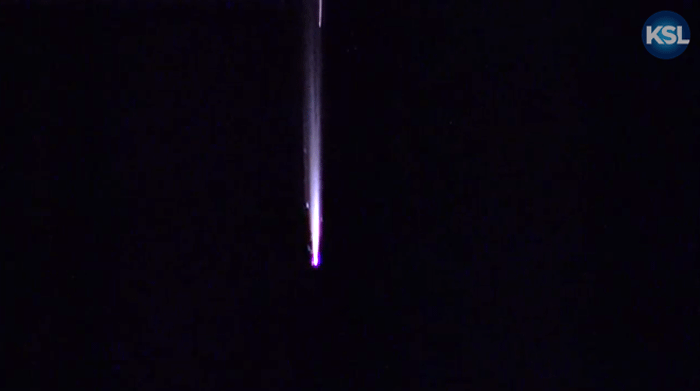
.
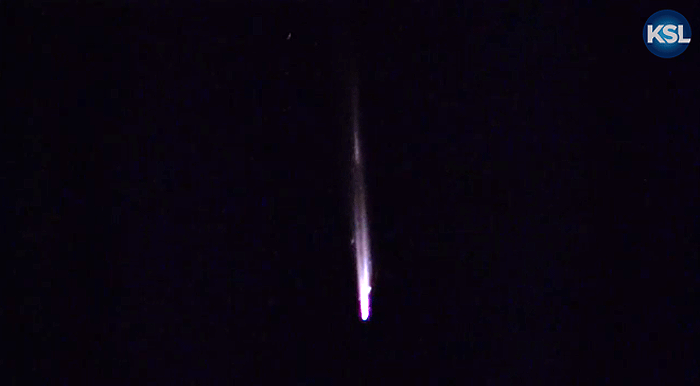
.
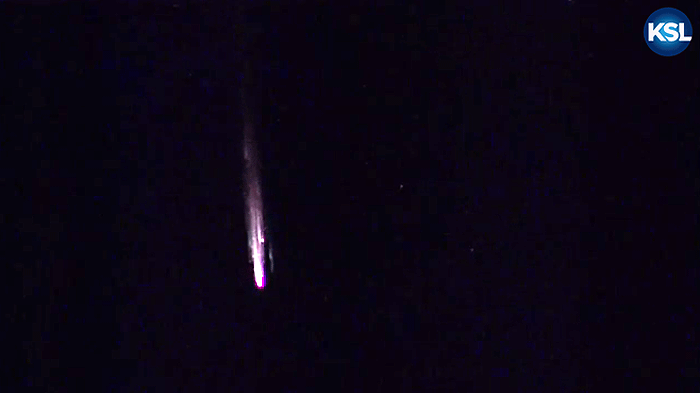
.

SALT LAKE CITY — KSL.com received several reports of a meteor-like object slowly moving across the Utah sky at about 10:55 p.m. Monday.
Patrick Wiggins, NASA/JPL Solar System Ambassador to Utah, said the object was a rocket body used in the launch of Yaogan Weixing-26, a Chinese satellite, which was launched in December 2014.
Wiggins said the rocket body was about 149 kilometers above Earth when it was over Utah.
Phone calls coming into the KSL Newsroom indicated people from Idaho down to Spanish Fork had seen the burning rocket.
Community-driven meteor sighting website, www.amsmeteor.org, received reports at about the same time of sightings from Utah, Montana, Washington, Oregon, Colorado, California and Canada.
KSL-TV photographer Mark Wetzel captured amazing video of the rocket as it passed over northern Utah (siehe Frams).
.
Fotos von Re-Entry:
.
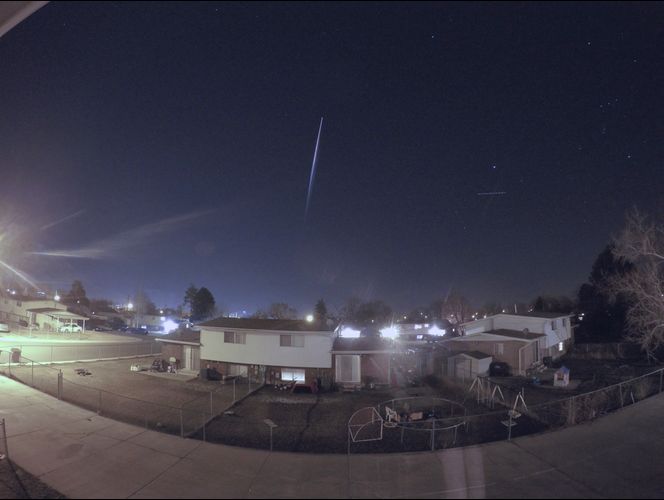
Taken in Provo Utah at 10:58pm (Submitted using iWitness)
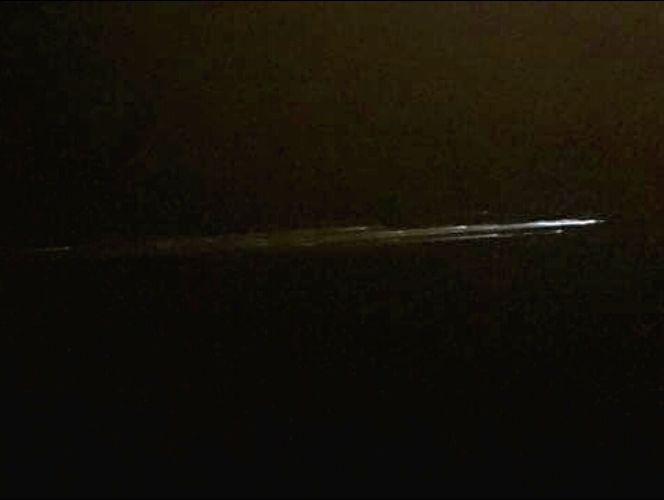
Meteor: Meteor spotted over Great Falls about 10:55 last night. It might be a satellite burning up. (Photo: Rick Moore) (Submitted using iWitness)
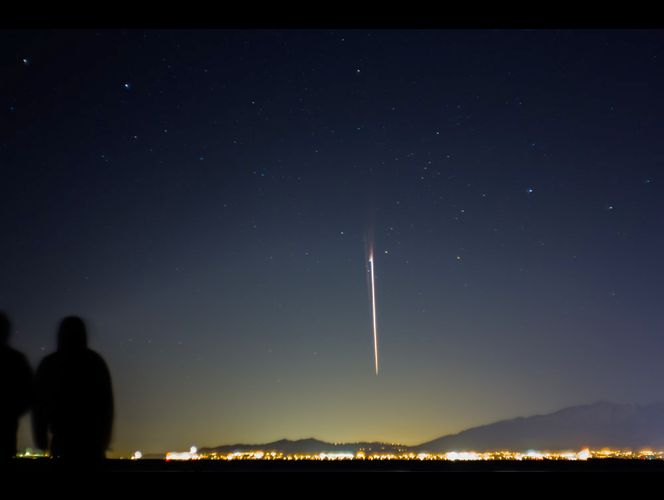
Rocket Body: Out by utah lake taking star pictures when we saw this! (Photo: Jason Lutz ) (Submitted using iWitness)
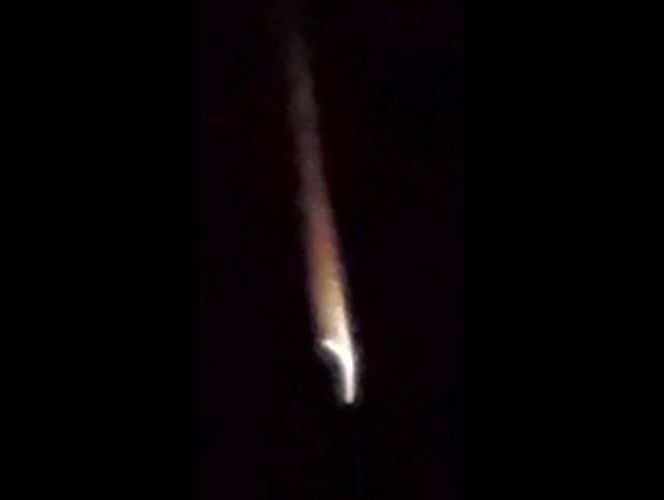
Meteor utah: Meteor over Ogden 10:54 pm Monday night (Photo: Casey M.) (Submitted using iWitness)
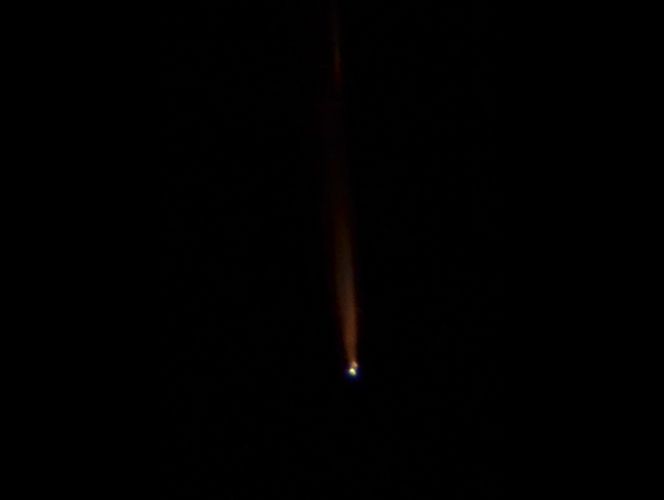
Slow and Low Meteor: On 23 Feb 15 at 1055 pm a large slow flying meteor was burning through the Utah County sky from south to north and headed over the Salt Lake Valley.
The meteor was burning and pieces were falling off, I was fortunate enough to have my camera in hand when a friend called me outside to see it. (Photo: Jason Willard) (Submitted using iWitness)
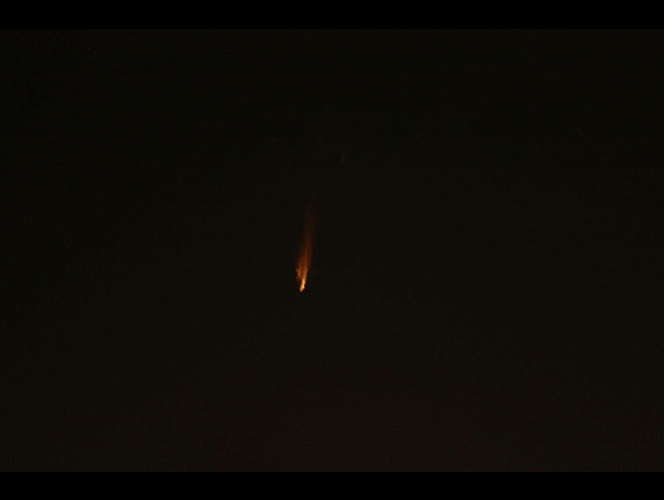
Fireball above SLC: I just witnessed this fireball just before 11:00PM falling from the North sky above the Western part of the Salt Lake Valley. I have a video of it as well. Just have to download it from my phone. The pictures were taken with a Canon D70. By the time I got my camera out and going it was quite a distance away. (Photo: Brian Slade) (Submitted using iWitness)
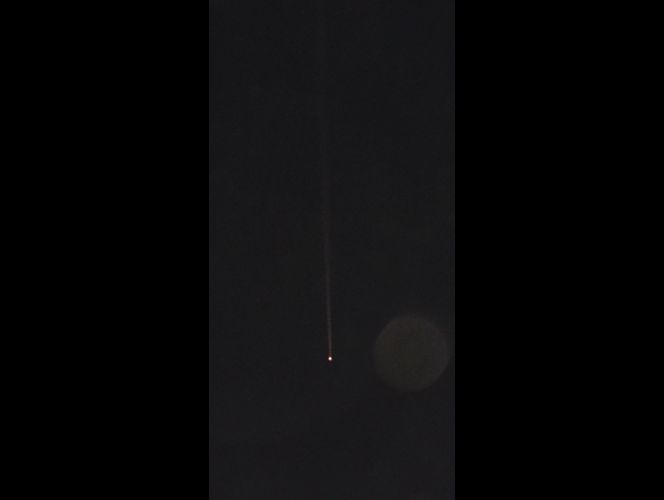
Slow and Low Meteor: On 23 Feb 15 at 1055 pm a large slow flying meteor was burning through the Utah County sky from south to north and headed over the Salt Lake Valley.
The meteor was burning and pieces were falling off, I was fortunate enough to have my camera in hand when a friend called me outside to see it. (Photo: Jason Willard) (Submitted using iWitness)
Quelle: KSLTV.
Update: 23.30 MEZ
.
Reentering Chinese Rocket Sparks North America Fireballs
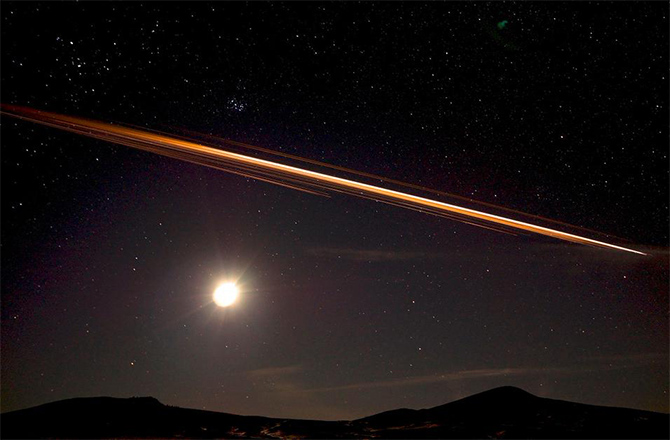
The reentering third stage of the Chinese rocket that launched the Yaogan Weixing-26 satellite was photographed by John Arnold on Feb. 23 over Craig, Montana.
.
The third stage of a Chinese rocket, which blasted off in December to put a remote sensing satellite into orbit, returned into the atmosphere in grand fashion Monday night, sparking a family of spectacular fireballs as it incinerated over the western part of North America.
Photographer Donny Mott, who was taking pictures of auroras, captured the glowing debris from Spirit Lake, Idaho, at around 10 p.m. local time, SpaceWeather.com reports.
“It was super bright,” Mott told SpaceWeather.com. “You can can see it breaking up in four images I took 10 seconds apart.”
Sky-watcher John Arnold had a different perspective from Craig, Montana (pictured above). In all, there were nearly 200 confirmed sightings of the rocket body’s incineration over nearly 2,000 miles, from as far south as Scottsdale, Arizona, to Didsbury, Alberta in the north, reports amateur satellite tracker Ted Molczan, a Canadian.The rocket, which was launched on Dec. 26, carried a satellite designated Yaogan Weixing-26, a remote-sensing satellite that is used for scientific and/or military purposes.
Quelle: D-News
.
CHINESE ROCKET RE-ENTRY: Last night, Feb. 23-24, sky watchers in the western half of North America witnessed a spectacular cluster of fireballs and meteors. We now know it was the re-entry and breakup of a Chinese rocket body, specifically stage 3 of the CZ-4B rocket that launched the Yaogan Weixing 26 satellite in Dec. 2014. Donny Mott photographed the glowing debris from Spirit Lake, Idaho:
.

Mott was watching last night's display of auroras around 10 pm local time when the fragments flew by. "It was super bright," he says. "You can see it breaking up in these 4 images I took 10 seconds apart."
Another photographer, John Arnold, caught the meteor flying over Craig, Montana: photos.
According to satellite tracking expert Ted Molczan, "there are confirmed sightings from Arizona, Utah, Nevada, Wyoming, Idaho, Oregon, Washington, Montana, British Columbia, Alberta. The most southerly observation I have noted so far was from Scottsdale, Arizona; the most northerly from Didsbury, Alberta. That spans nearly 3000 km of the descent." Molczan has prepared a map of sightings along with the ground track of the decaying rocket body:
.
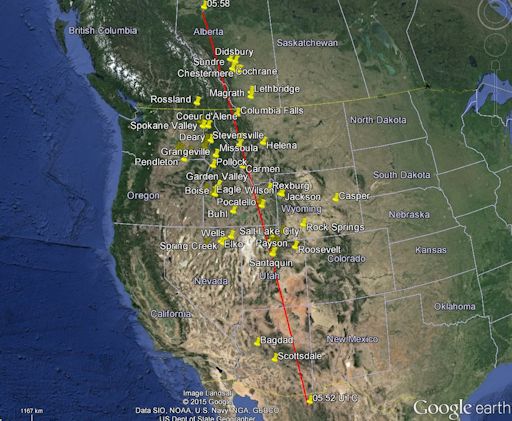
The re-entering rocket body traveled from south to north. Molczan says "the approximate toe of the debris footprint (should any have survived to impact Earth) would be well into Canada."
.
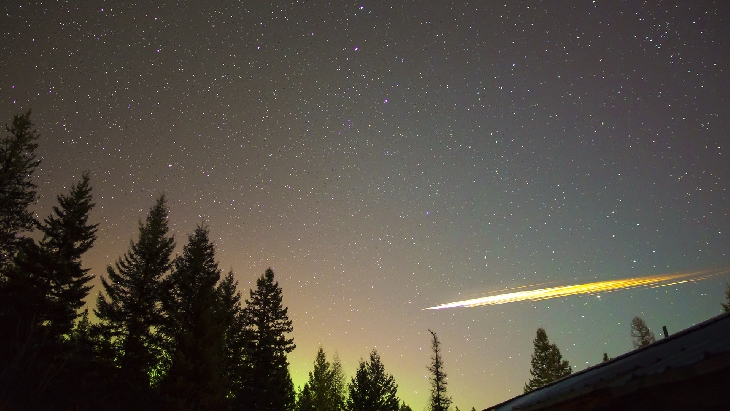
Quelle: Spaceweather
.
Update: 25.02.2015
.
Calgary photographer catches 20-second blaze as Chinese rocket burns up
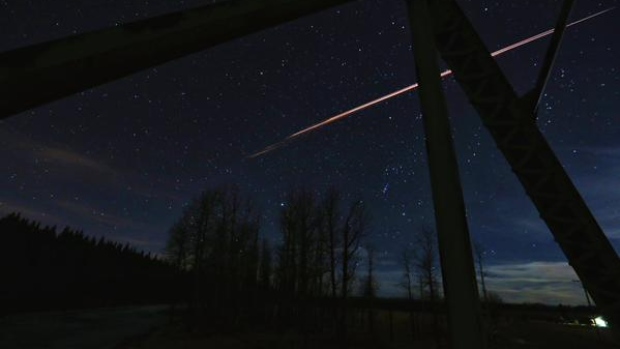
A Calgary photographer snapped some amazing shots of a fireball streaking through the sky on Monday night.
Neil Zeller was taking pictures of the northern lights just west of Calgary around 11 p.m. MT when he noticed the blaze.
Zeller says that normally he misses shots like these because they happen so fast. But this fireball was visible for about 20 seconds.
“Once it was over, I just wanted to yell like a kid,” he said.
“It was about 45 seconds after it I was able to put the first photo up because I thought the world needed to see it.”
Zeller (@Neil_Zee) posted the pictures on Twitter, causing an immediate sensation.
The fireball in the sky was not a meteor, but a Chinese rocket booster that broke apart, said Maj. Martin O'Donnell, a spokesman for U.S. Strategic Command.
The rocket had launched a satellite on Dec. 27 and wasn't abnormally large, said O'Donnell. Angle of re-entry and weather conditions can make space objects look brighter from earth.
According to the American Meteor Society, more than 150 people from two provinces and nine western states reported seeing the fireballs.
Quelle: CBCNEWS
5009 Views
